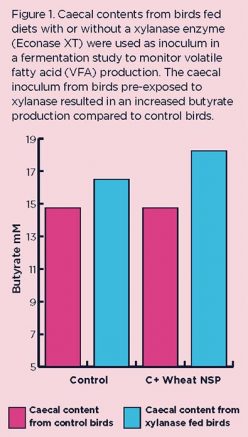A new perspective on the mode of action of fibre-degrading enzymes NSPase.
Increased understanding of NSPase mode of action is presenting a new perspective on their role in nutritional strategies to improve performance.
Fibre-degrading enzymes – NSPases – have been used commercially for more than 30 years. Historically, much of the focus on NSPases was placed on reducing the anti-nutritive effects of fibre, now the focus is shifting towards their role in generating beneficial breakdown products of fibre.
“We know that some specific breakdown products of NSP are beneficial and play a role in adapting the intestinal microbiota, which in turn can boost fibre utilisation and performance.”
Dr Gemma Gonzalez Ortiz, Research Manager, AB Vista

New research (Bedford and Apajalahti, 2018) explores how NSPase mode of action may be due to more than simply improving fibre digestibility and fermentation of the oligosaccharides generated. When fed over an extended period of time, dietary xylanase has been shown to effectively increase the capacity of bacteria inside the caeca to digest fibre. This suggests that xylanases have a “training” effect on the caecal microbiome, resulting in adaptive changes over time towards a greater capacity to degrade fibre (Figure 1). This means that NSPases are doing much more than previously thought – they contribute to the development of a more beneficial microbiota, subsequently enabling more efficient uptake of dietary nutrients by the host animal.
“We need to think of NSPase as a tool to accelerate the ability of the gut microbiome to degrade fibre. Rather than quantitively degrading plant cell wall fibre, these enzymes are in effect increasing the intrinsic fibre-digesting capacity of the animal. This has significant implications with regard to selection of NSPase enzyme classes and dose rate.”
Dr Mike Bedford, Research Director, AB Vista
To find out more about the research referenced in this article and other pieces of related AB Vista research, visit www.abvista.com or contact your local AB Vista representative.